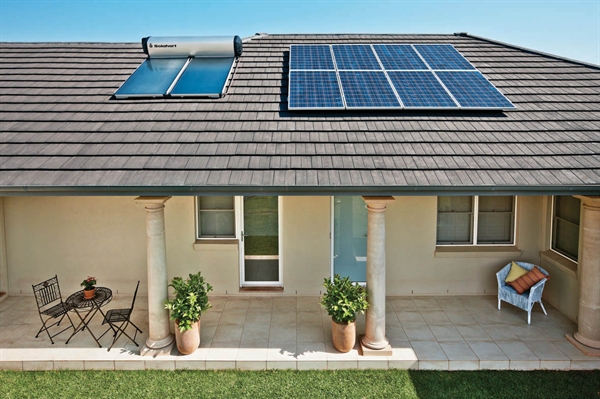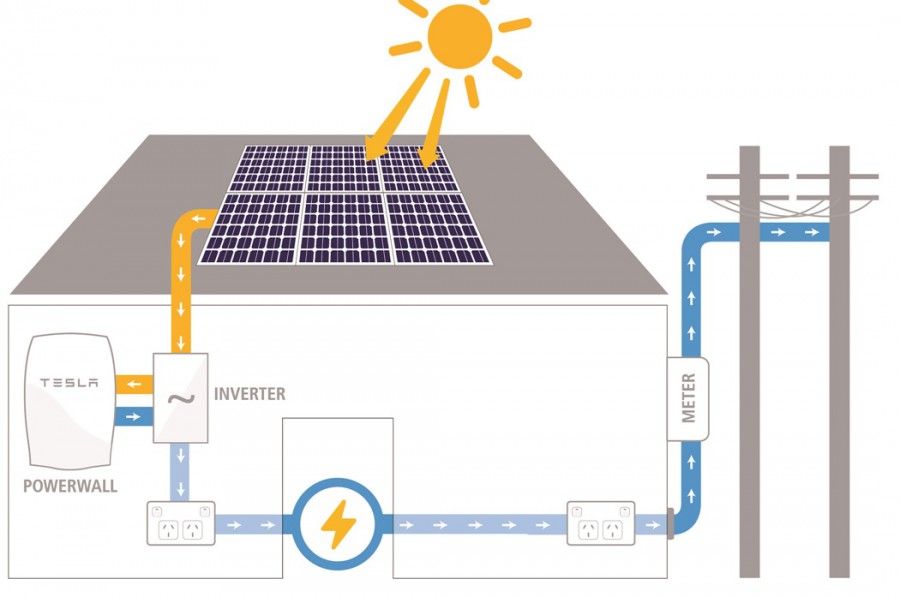
Australian solar company Solahart has followed Natural Solar and Origin Energy in Powerwall in Australia. Tesla Energy will supply Solahart customers from early 2016, with installations expected to commence in February 2016.
Solahart offer existing solar owners the option to retrofit Tesla Powerwall batteries, or as part of an integrated new solution which includes a whole solar and storage solution.
Stephen Cranch, Solahart’s GM Sales and Marketing Renewables says,
“We’re not new to renewable energy. Indeed, Solahart has an unsurpassed reputation for solar excellence spanning more than 60 years, and we are committed to providing the best products and advice to local homeowners. Not only that, but we have an extensive installation capability throughout Australia, which was obviously a key consideration for Tesla in identifying preferred resellers.”
Solahart has been operating in the solar sector since 1953. It has manufactured over one-million solar hot water systems, which have been installed in 80 countries on every continent. In 2010 it made the move into PV, with Solahart systems now installed on thousands of Australian roofs.
“We have witnessed myriad changes in the solar industry in Australia and we anticipate significant changes in the country’s energy market and how consumers perceive and take up renewable energy,” says Cranch. “We believe the introduction of the Tesla Powerwall battery in Australia will be a game changer, and we’re proud to be at the forefront of this exciting new phase.
Solarhart says their Research and Development team currently has the Tesla Powerwall in their test lab and have been conducting general battery storage testing for some time. Solahart’s dealers and accredited installers are skilled in understanding the specific needs of consumers and tailoring solutions to suit those needs. By adding Powerwall to their available options, they believe a comprehensive product suite will greatly benefit householders.
One thing to remember about the Powerwall is that it is built to scale. This means that in a larger, power hungry home, you may have a larger solar array and add additional powerwalls to live completely off the grid. Personally I don’t have kids yet, but once I do, the demand on power will grow. As competitors to the Powerwall emerge, its important to consider this option to grow as a key part of the decision, right alongside the appearance, safety, noise and warranty (10 years).
While Solahart aren’t talking specific prices at this point, they do say,
“We expect our prices for the Powerwall will be competitive with what is being offered by others in the market – and we can offer a holistic solution should that be required.”
To help explain how Powerwall integrates into a solar system, Solarhart have supplied this diagram. A Solarhart Solar Power system will connect to the Tesla Powerwall through an inverter which takes the energy generated from your solar panels and prepares it for use inside your home.
The solar panels collect the sun’s light and converts the energy into DC current. The current is fed through an inverter and converted to 240V AC power used by our home and appliances. The amount of electricity you can produce depends on the number and efficiency of the panels, as well as the size of the inverter. Tesla Powerwall will maximise the solar power by storing excess electricity produced during the day for use usually when the sun is not shining.
Its important to remember, that while an adequate system could see a house move completely off the grid, it is expected for most to remain connected. This means if you had an extended period where the sun didn’t produce enough energy, or your battery was depleted, you would still have power.
This equation dramatically changes the cost recovery for a solar installation. While adding a Powerwall does add cost, it means you’re not susceptible to the now severely low feed in tariffs for energy supplied back to the grid.


